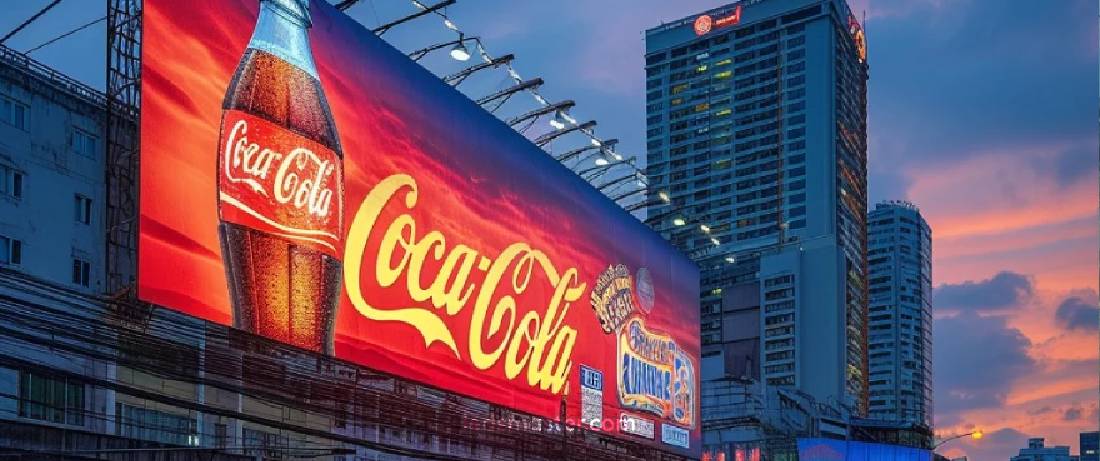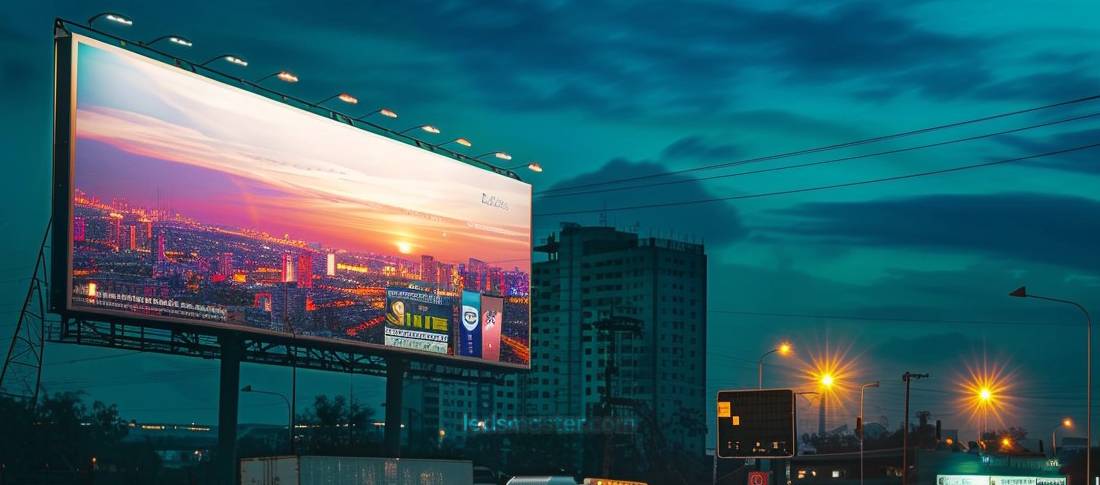Illuminate your message with our advanced LED billboard lighting. Designed for clarity, efficiency, and durability, our customizable options ensure maximum visibility day and night, trusted by global brands for impactful advertising.
Elevate your billboard’s visibility with our state-of-the-art LED lighting solutions. Designed for optimal performance and energy efficiency, our products ensure your message shines brightly in any environment. Whether for advertising, promotions, or public announcements, trust our reliable lighting options to enhance visibility and maximize impact. Explore our range of innovative solutions tailored to meet your billboard lighting needs with superior clarity and longevity.
Get your complimentary lighting design today
Billboards are iconic symbols of advertising, designed to capture attention and convey messages to a wide audience. Central to their effectiveness is the quality of their lighting. Billboard lighting not only enhances visibility but also ensures messages remain clear and impactful, day and night. Billboards serve as dynamic canvases for creativity and communication, leveraging strategic placement in high-traffic areas to reach diverse demographics. Effective billboard lighting goes beyond mere illumination; it transforms static advertisements into vibrant, engaging displays that resonate with viewers.
By harnessing advancements in lighting technology and understanding the nuances of environmental factors, advertisers can craft compelling narratives that captivate audiences around the clock. This article delves into how innovative lighting solutions enhance the visual impact of billboards, ensuring they remain effective tools for brand awareness and messaging in today’s competitive advertising landscape.

Table of Contents
ToggleBillboard lighting has evolved significantly, with modern technologies offering distinct advantages over traditional options. LED (Light Emitting Diode) lighting has emerged as the preferred choice due to its energy efficiency, longevity, and superior brightness control. LEDs consume less power than fluorescent or incandescent bulbs, making them cost-effective and environmentally friendly. In contrast, traditional lighting sources require more frequent maintenance and often produce uneven lighting that can detract from message clarity.
The shift towards LED technology has not only improved operational efficiency but also expanded creative possibilities for advertisers. With customizable color options, remote control capabilities, and programmable lighting effects, LED billboards can dynamically adapt to different marketing campaigns and environmental conditions. This versatility not only enhances visual impact but also maximizes the effectiveness of advertising investments, ensuring messages resonate with viewers in diverse settings.
Advancements in LED technology enable precise control over brightness and color temperature, ensuring consistent and impactful displays throughout the day and night. Advertisers can synchronize lighting effects with specific events or seasons, creating immersive and memorable experiences for viewers. As LED technology continues to evolve, it promises to further revolutionize billboard advertising by offering even more sophisticated features that enhance engagement and interactivity with audiences.
Achieving optimal lighting levels is critical for maximizing billboard visibility while minimizing energy consumption. Industry standards recommend specific brightness levels measured in nits, ensuring that billboards remain visible under varying ambient light conditions without causing glare or discomfort to viewers. Balancing brightness with energy efficiency involves selecting LEDs with adjustable brightness settings and utilizing advanced optics to direct light precisely onto the billboard surface.
Moreover, advancements in lighting technology have introduced intelligent lighting systems that can automatically adjust brightness based on ambient light levels or time of day, further optimizing energy usage without compromising visibility. This adaptive approach not only enhances the viewer experience but also contributes to sustainable advertising practices, reducing operational costs and environmental impact over the billboard’s lifespan.
Effective lighting placement and angle play crucial roles in ensuring the readability of billboard messages. Properly positioned lights prevent shadows and uneven illumination that can obscure text or graphics.
The angle of illumination affects visibility at different times of day, with adjustments needed to compensate for changing sunlight angles and shadows. Strategic placement along the billboard’s perimeter or integrated into the structure itself helps achieve uniform illumination across the entire display area.
Advancements in lighting design allow for customizable beam angles and light distribution patterns, enabling advertisers to optimize visibility for specific viewing distances and angles. By strategically aligning light sources with the billboard’s viewing angles and surrounding environment, advertisers can enhance message clarity and maximize impact, ensuring their advertisements are seen and understood by a broader audience.

Outdoor billboards face constant exposure to weather elements, necessitating lighting solutions designed for durability and weather resistance. LED technology excels in this regard, offering sealed units that protect against moisture, dust, and temperature fluctuations. Waterproof enclosures and corrosion-resistant materials ensure reliable operation in rain, snow, and extreme temperatures. LED billboards are engineered to withstand harsh outdoor conditions without compromising performance, making them ideal for both urban and rural environments where weather variability is significant. These robust features not only enhance longevity but also minimize maintenance requirements, reducing downtime and operational costs for advertisers.
Environmental considerations extend to energy efficiency, with LEDs consuming up to 80% less energy than traditional lighting sources, reducing carbon footprint and operating costs. This energy efficiency translates into substantial savings over the lifespan of the billboard lighting system, contributing to sustainability initiatives and regulatory compliance.
LED billboards contribute less to light pollution due to their directional light output and reduced spillage into the surrounding environment, preserving natural nighttime landscapes and minimizing disturbances to local ecosystems. As global efforts intensify to reduce energy consumption and promote eco-friendly practices, LED billboard lighting stands at the forefront of sustainable advertising solutions, offering both economic and environmental benefits to advertisers and communities alike.
Proper maintenance is essential to prolonging the lifespan and performance of billboard lighting systems. Regular inspections should include checking for debris buildup, ensuring secure mounting, and cleaning lenses to maintain optimal light output. Scheduled replacements of LEDs or other components prevent unexpected failures and ensure consistent illumination. Utilizing remote monitoring systems allows for proactive maintenance by alerting operators to potential issues before they affect visibility or safety.
Effective maintenance practices not only extend the operational life of the lighting system but also uphold the integrity of the advertising message. By investing in regular upkeep, advertisers can maximize the return on their investment in billboard advertising, ensuring that their messages remain clear, impactful, and visible to their target audience throughout the billboard’s lifecycle.
Billboard lighting is crucial for effective communication and brand visibility. LED technology offers superior performance, energy efficiency, and durability over traditional options. Advertisers maximize message impact by focusing on optimal lighting levels, strategic placement, environmental considerations, and proactive maintenance. As technology advances, innovations in smart lighting and sustainability promise to enhance effectiveness and eco-friendliness.
Innovations like adaptive lighting sensors, renewable energy integration, and interactive displays are transforming billboard advertising. These advancements meet consumer expectations and global sustainability goals, making LED billboards a strategic investment in effective, environmentally responsible advertising. Embracing these technologies allows advertisers to create compelling, sustainable, and impactful advertising experiences that resonate while supporting broader environmental objectives.